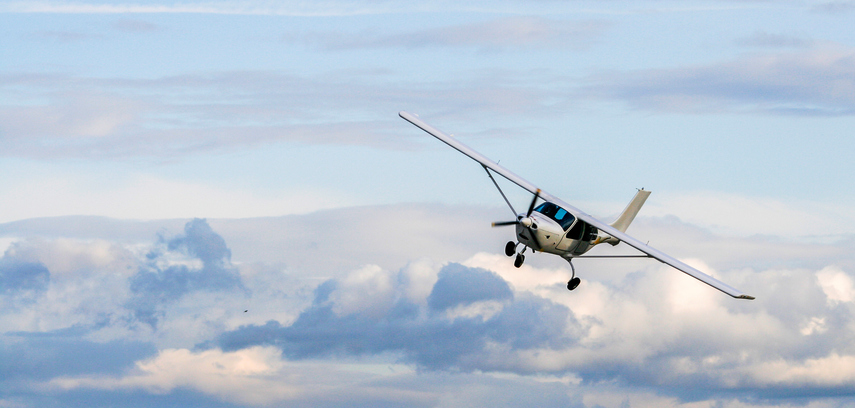
In many parts of the United States, fall is peak flying season. With cooler temperatures and lower density altitude, flying in the fall offers better engine performance, along with plenty of chances to spot the beautiful autumn foliage below.
However, fall is a perfect time for birds to fly, too. With around 350 species of birds migrating long-distance from North America to Central and South America, fall migration season presents serious safety hazards for pilots both on the runway and in the skies. Here are a few things to remember as you prepare for your next flight this fall:
Statistics on bird and wildlife strikes
Bird strikes have been a part of aviation since its very beginning. In fact, Wilbur Wright was the first to report a bird strike in 1908. In the past 20 years, there have been over 100,000 reports of bird and wildlife strikes, but experts think the number of strikes is much higher, estimating that about 80 percent of strikes are unreported by pilots. Bird and wildlife strikes also have significant implications for the aviation industry, which spends about $330 million and suffers 500,000 hours of downtime each year on aircraft strikes according to the AOPA.
Birds are by far the most the most common wildlife threat aviators face. Bird strikes make up about 97 percent of reported wildlife strikes and can cause significant structural and engine damage that can lead to fatal accidents. In general, engines can ingest one or two small birds without failing, but there is no engine certified to ingest a large bird weighing over four pounds without shutting down.
Preparing for bird strikes
For the most part, bird strikes are unpredictable, but there are some safety measures pilots can take reduce the likelihood of experiencing a strike. One of the best ways to prevent and avoid strike hazards is by staying informed and educated about bird and wildlife activity. Take time to become familiar with the four major bird migration routes and pay attention to any NOTAMs issued warning pilots about high bird activity before and during flight. Because about 90 percent of bird strikes occur at or near airports, it’s also a good idea to call the FBO at your destination to ask about bird or wildlife hazards in the vicinity of the airport. Most bird strikes occur during the day, but pilots shouldn’t discount the chances of a nighttime strike. Although most birds usually fly at around 7,000 above sea level, some species can reach even higher altitudes. While rare, some bird strikes have been reported as high as 37,000 feet.
Finally, always have an emergency plan in place to prepare for the possibility of a bird strike, including identifying alternate routes when planning your flight. Experts also recommend warming your windshield in colder months to reduce the chances of it shattering from a strike and keeping shatterproof glasses or goggles in the cockpit.
How to report a strike
If you have a close encounter with a bird or migrating flock, inform ATC right away so other pilots can be notified. If you are involved in a bird strike, remember that your first priority is to fly the aircraft. Many aircraft accidents occur when a pilot loses control of the aircraft in an attempt to avoid a bird. Once the aircraft is under control, you can assess any damage and communicate with ATC and the airport operators.
Whether or not the aircraft is damaged, it’s important to report the strike to the FAA by filling out the FAA Bird/Wildlife Strike Report. Your report will provide valuable information to aid the FAA’s ongoing wildlife strike research. If possible, consider sending the bird strike remains to the Smithsonian Institute’s Feather ID Lab, which works to identify the bird species involved in a strike and support the FAA’s preventative efforts.